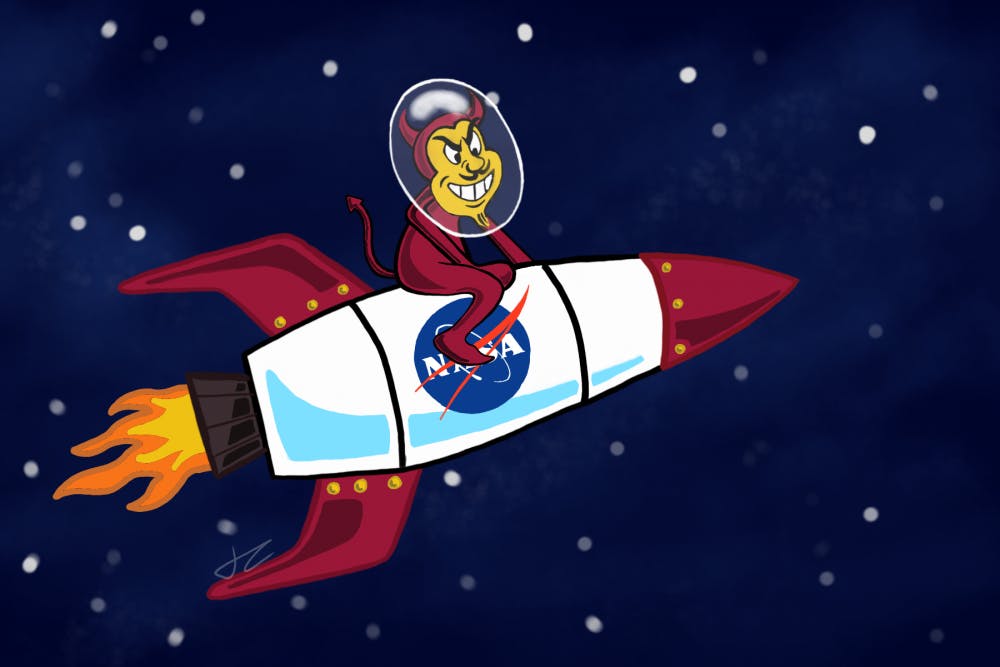ASU collaborations with NASA may provide insight into climate change and the origins of the solar system.
Along with providing a device to measure the surface temperatures of asteroids for NASA’s Lucy mission, a group of ASU researchers are creating hardier electronics for future space missions, ASU professors said.
“Collaboration with NASA equals exploration funds,” said Erik Asphaug, a professor at the ASU School of Earth and Space Exploration.
NASA’s Lucy mission to the Trojan asteroids surrounding Jupiter is one such collaboration that contributes to space exploration, Asphaug said.
"From a pragmatic point of view, this is humanity's backyard, besides the Earth-Moon system," Asphaug said.
Courtesy of NASA
Asphaug said the mission would include a thermal instrument created by Phil Christensen.
“The thermal instrument built here is basically designed to measure longer in the infrared,” Asphaug said.
Asphaug said it is possible to convert these long distance infrared readings into data about the asteroid’s surface temperatures.
“We’re not going to have landers and rovers in the Lucy mission, but there will be geology (research) nonetheless from this remote sensing,” Asphaug said.
The potential geological impact reaches back billions of years, Asphaug said.
“The main interest of the Trojan asteroids is their tremendous diversity,” Asphaug said. “By figuring out the diversity of their geology, I think it tells us a lot about the mechanisms of early solar system evolution.”
But measuring objects in space raises many challenges. He said that overheating is a major problem for space electronics.
“We take it for granted that heat is just going to dissipate into the air, or radiate away. In vacuum, there is no air to convect the heat away,” Asphaug said.
ASU researchers Robert Nemanich and Brianna Eller said they aim to fix this problem, among others.
Nemanich said their team works dually on making heat-resistant electronics and mirror coatings, both for NASA.
“What our portion of the project is, is to develop a special coating of mirrors to allow them to work efficiently in the ultraviolet,” Nemanich said.
Again, this raises challenges, he said.
“To do this, we have to have thin films that are optically transparent with very, very low absorption in the ultraviolet, and also that they have a precise thickness control,” Nemanich said
In order to achieve this degree of precision, the team uses a process called atomic layer deposition to create the coating one atomic layer at a time, Nemanich said.
The team also researches how to use diamonds as transistors, which allow for more intense heat, Eller said.
She said NASA would be using these transistors to study Venus.
“Venus is around 300 to 350 (degrees) Celsius at the surface, so any electronics you put there burn up,” Eller said.
Studying Venus could provide insight into global warming and other geological properties, Eller said. She also said her team’s work on heat-resistant electronics could further geothermal drilling, a green energy source.
Reach the reporter at chawk3@asu.edu
Like The State Press on Facebook and follow @statepress on Twitter.




